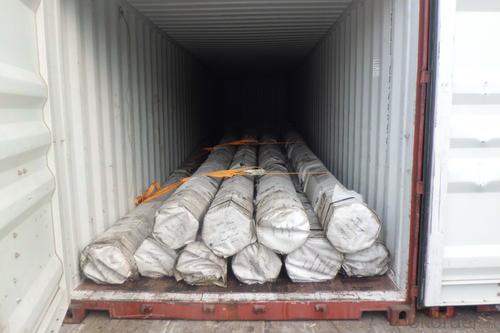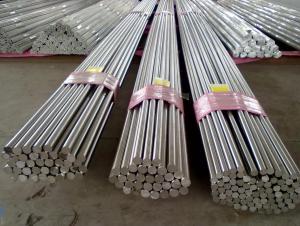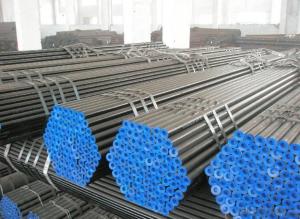hot selling ASTM A179, A192 seamless steel tube
- Loading Port:
- Shanghai
- Payment Terms:
- TT OR LC
- Min Order Qty:
- 10 m.t.
- Supply Capability:
- 100000 m.t./month
OKorder Service Pledge
OKorder Financial Service
You Might Also Like
1. Common standard of boiler tube:
ASTM A53 Seamless tube for boiler
ASTM A106 Carbon steel tube for High-Temperature Service
ASTM A178 Electric-Resistance-Welded Carbon Steel and Carbon-Manganese Steel Boiler and Superheater Tube
ASTM A192 Seamless Cold-Drawn Low-Carbon Steel Heat-Exchanger and Condenser Tube
ASTM A209 Seamless Carbon-Molybdenum Alloy-Steel Boiler and Superheater Tubes
ASTM A213 Seamless Ferritic and Austenitic Alloy-Steel Boiler,Superheater and Heat-Exchanger Tubes
ASTM A335 Seamless Ferritic Alloy-Steel Pipe for High-Temperature Service
DIN 17175 Seamless tube of heat-resistance steel
DIN 1629 Seamless circular tube
DIN 28180 Seamless steel tubes for tubular heat exchangers
EN 10216-2 Seamless steel tubes for pressure purpose
JIS G3461 Boiler tube for heat-resistance
JIS G3462 Alloy boiler tube for heat-resistance
JIS G3467 Steel tube for fired heater
JIS G3458 Alloy tube
2. Application:
Boiler tubes are a kind of frequently-used tubes in our life,they are mainly used in manufacturing heating pipelines,containers,coal-saving devices,superheaters,arch tube,reheater tube,airway tube etc.we have much experience to produce high quality products for your suiatable applications.
3. Specification:
OD: 12.7-610mm
Thickness: 2.5-45.0mm
Length: Generally speaking,we suggest 5.8m,6m,11.8m or 12m suitable for 20ft or 40ft containers.
- Q: Can steel pipes be used for underground cooling systems?
- Yes, steel pipes can be used for underground cooling systems. Steel pipes are often preferred for underground applications due to their strength, durability, and resistance to corrosion. They can effectively withstand the pressure and temperature requirements of cooling systems and can be used for transferring chilled water or other coolants underground.
- Q: Are steel pipes suitable for nuclear power plants?
- Yes, steel pipes are suitable for nuclear power plants. Steel is a commonly used material in the construction of nuclear power plants due to its excellent mechanical properties, high strength, and durability. Steel pipes are used in various applications within these plants, including the transportation of cooling water, hot gases, and steam. The steel used in nuclear power plants is carefully selected and tested to meet stringent safety regulations and quality standards. It is crucial for these pipes to have excellent resistance to corrosion and high-temperature environments, as they are exposed to harsh conditions such as high pressure, high temperatures, and radioactive materials. Furthermore, steel pipes have a long service life and require minimal maintenance, making them a cost-effective choice for nuclear power plants. They can withstand extreme conditions, ensuring the safe and reliable operation of the plant. Additionally, steel pipes can be easily fabricated, installed, and repaired, which is essential for the efficient functioning of a nuclear power plant. Overall, steel pipes are highly suitable for nuclear power plants due to their strength, durability, resistance to corrosion, and ability to withstand extreme conditions.
- Q: How do you calculate the stress in a steel pipe?
- When calculating the stress in a steel pipe, it is necessary to take into account the steel's material properties and the external forces acting upon the pipe. The stress in the pipe is typically determined using the following equation: Stress = Force / Area Initially, the force acting on the pipe must be established. This force may stem from external loads such as pressure, weight, or mechanical forces. The force can be calculated by multiplying the pressure or weight by the surface area it acts upon. For instance, if the pipe is subjected to internal pressure, the force can be determined using the equation: Force = Pressure x Area Subsequently, the cross-sectional area of the pipe needs to be determined. The cross-sectional area of a circular pipe can be calculated using the formula: Area = π x (Diameter / 2)^2 Once the force and area have been determined, the stress can be calculated by dividing the force by the area. This calculation will yield the stress value in units like pounds per square inch (psi) or newtons per square meter (Pa). It is important to bear in mind that the stress calculation assumes that the pipe is in a state of equilibrium and that the material properties of the steel are known. The material properties, such as yield strength and ultimate tensile strength, are utilized to ensure that the calculated stress does not exceed the steel's maximum capacity.
- Q: Are steel pipes resistant to impact?
- Yes, steel pipes are generally resistant to impact due to their high strength and durability. They can withstand external forces and are less likely to deform or break upon impact compared to other materials.
- Q: Are steel pipes suitable for underground gas distribution?
- Yes, steel pipes are suitable for underground gas distribution. They have a high tensile strength, corrosion resistance, and can withstand extreme temperatures, making them an ideal choice for transporting natural gas underground. Additionally, steel pipes are durable and have a long lifespan, making them a reliable option for gas distribution systems.
- Q: Can steel pipes be used for wastewater treatment facilities?
- Yes, steel pipes can be used for wastewater treatment facilities. Steel pipes are known for their durability, corrosion resistance, and high strength, which makes them suitable for handling various types of wastewater and harsh chemicals. Additionally, steel pipes can be easily welded, allowing for flexibility in design and installation.
- Q: What are the different types of steel pipe coatings for drinking water pipelines?
- There are several types of steel pipe coatings used for drinking water pipelines, including fusion bonded epoxy (FBE), polyurethane (PU), and polyethylene (PE). These coatings provide corrosion protection, prevent leaching of contaminants into the water, and ensure the durability of the pipes.
- Q: Can steel pipes be used for underground drainage in acidic soils?
- Yes, steel pipes can be used for underground drainage in acidic soils. However, it is important to consider the type of steel used and the corrosion resistance properties to ensure longevity and prevent potential damage from the acidic environment. Additionally, protective coatings or linings can be applied to the steel pipes to enhance their resistance to corrosion in acidic soils.
- Q: How do you calculate the thermal expansion of steel pipes?
- To calculate the thermal expansion of steel pipes, you need to use the coefficient of thermal expansion (CTE) for steel. The CTE is a measure of how much a material expands or contracts with changes in temperature. For steel, the average value of the CTE is typically around 12 x 10^-6 per degree Celsius (12 μm/m°C). To calculate the thermal expansion of a steel pipe, you need to know the initial length of the pipe (L0), the change in temperature (ΔT), and the coefficient of thermal expansion (CTE) for steel. The formula to calculate the thermal expansion is as follows: ΔL = L0 * CTE * ΔT Where: ΔL is the change in length of the steel pipe L0 is the initial length of the steel pipe CTE is the coefficient of thermal expansion for steel ΔT is the change in temperature For example, let's say you have a steel pipe with an initial length of 2 meters (L0), and the temperature increases by 50 degrees Celsius (ΔT). The CTE for steel is 12 x 10^-6 per degree Celsius. ΔL = 2m * 12 x 10^-6/°C * 50°C ΔL = 0.00024m/m°C * 50°C ΔL = 0.012m Therefore, the steel pipe would expand by 0.012 meters or 12 millimeters when the temperature increases by 50 degrees Celsius. It's important to note that this calculation assumes a linear expansion, which is valid for small changes in temperature. However, for larger temperature differences or more complex pipe systems, a more detailed analysis may be required to account for factors such as the pipe's material properties, geometry, and thermal boundary conditions.
- Q: How are steel pipes protected against rust and corrosion?
- Steel pipes are protected against rust and corrosion through various methods such as applying protective coatings, galvanizing, and utilizing corrosion-resistant alloys.
Send your message to us
hot selling ASTM A179, A192 seamless steel tube
- Loading Port:
- Shanghai
- Payment Terms:
- TT OR LC
- Min Order Qty:
- 10 m.t.
- Supply Capability:
- 100000 m.t./month
OKorder Service Pledge
OKorder Financial Service
Similar products
Hot products
Hot Searches
Related keywords






























